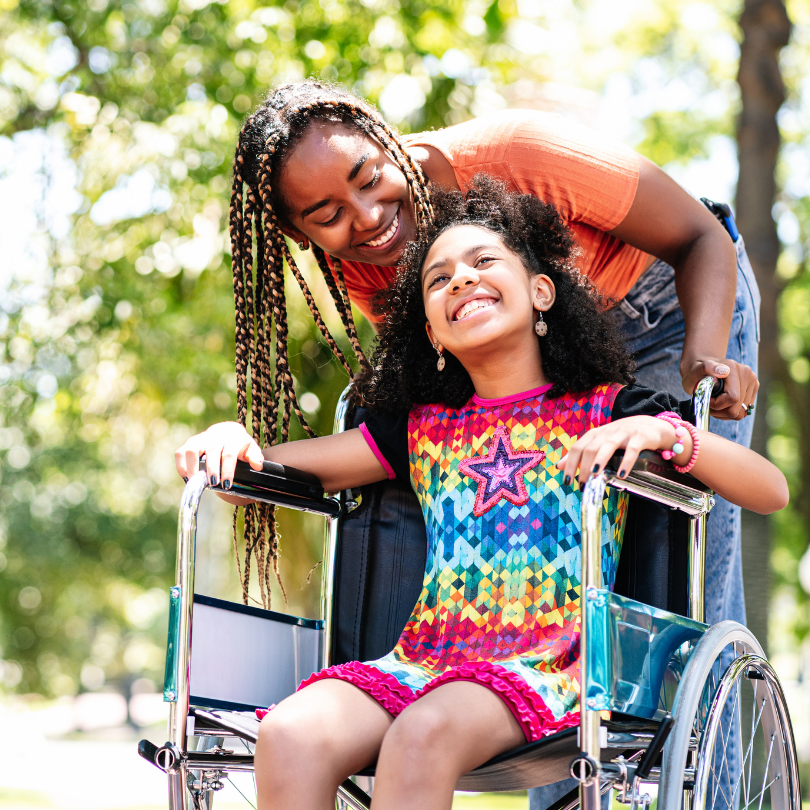
There is growing interest in the use of stem cells in the treatment of neurological damage including spinal injury. Stem cell therapies may be used in conjunction with orthopaedic applications designed to help treat spinal joints in addition to strategies to address spinal cord lesions at the site of injury.
Spinal cord injuries and their impact on patients
The spinal cord transmits bioelectrical signals between the brain and peripheral organs through nerve fibres with electrical excitability and connectivity and this vital function becomes disrupted or interrupted as a result of injury to the spinal cord. The level of the damage or lesion to the spinal cord has a significant impact on the patient and their motor and/or sensory functionality and in severe cases can cause paraplegia or quadriplegia. According to the World Health Organisation, every year, around the world, between 250 000 and 500 000 people suffer a spinal cord injury. The majority of spinal cord injuries are due to preventable causes such as road traffic accidents, falls or violence (1).
Can stem cell therapies be used to treat spinal cord injuries?
Spinal cord injuries can be very debilitating in terms of pain and loss of functionality for patients and often standard clinical approaches do not achieve satisfactory results. Various regenerative medicine strategies are therefore being actively explored focussing mainly on the use of stem cells derived from adipose tissue or umbilical cord tissue, however, bone marrow and cord blood have also been used. This review aims to summarise some of the recent innovative treatment strategies and developments that are showing promise as viable adjuncts or replacements for conventional therapies.
The role of mesenchymal stem cells
Mesenchymal stem cells (MSCs) are considered to be key players in regenerative medicine including cell-based therapies for spinal cord injury. MSCs have the capacity to undergo neuronal differentiation under certain circumstances. However, more importantly, they have immunomodulatory and anti-inflammatory properties and the ability to enhance new blood vessel formation and thus promote healing. At the site of injury, they secrete a range of protein molecules such as cytokines, chemokines, nucleic acids, and other factors. Overall, MSCs promote a microenvironment that promotes local repair and tissue regeneration.
Using scaffolds in association with mesenchymal stem cells
Introducing the use of engineered biologically inert scaffolds in association with MSC transplantation has been a major development in the field of spinal cord therapeutics. This strategy has been shown to improve the microenvironment of the injured tissue site and promote neuronal repair/healing by providing a support architecture and with a controlled pore structure that facilitates growth and organisation of cells needed for nerve repair (2-3).
Interestingly, it has been shown that the use of scaffolds can help restore the bioelectrical signal transmission of the spinal cord can direct axons (nerve fibres) to grow in the right direction to establish the connections and information pathways needed for functional communication between the brain and peripheral organs and limbs (4).
In addition, the restoration of bioelectricity can inhibit fibrous scar formation and help preserve the integrity of functional spinal cord tissue. Therefore, in addition to physical support, researchers are developing scaffolds designed to have electrical conductivity similar to healthy nervous tissue so that they can mimic the electrical microenvironments of the spinal cord and enhance the transmission of bioelectrical signals to and from the brain (5).
How does stem therapy fit in with other treatments?
Spinal cord injury is typically a complex pathology so a combination of approaches rather than stem cell therapy alone may be beneficial. A comprehensive treatment plan that includes the combined application of biological scaffolds, stem cell transplantation, drugs and physical therapy tailored for individual patients may be the best option (6-10).
How are clinical trials helping to advance treatment options?
It has been reported that MSC transplantation for spinal cord injury results in better outcomes than rehabilitation, including improvements in movement, sensation, and quality of life. However, it is generally accepted that further clinical trials are required to confirm the effectiveness and safety of these interventions (11). The effectiveness of MSCs on spinal cord injury recovery is influenced by a variety of factors including mode of transplantation, dose and frequency of MSC administration, timing and type of injury being treated. At present, the commonly used methods of MSC transplantation are into the subarachnoid space (space surrounding the spinal column in which the cerebrospinal fluid flows), intravenous injection and local injection into the injured area of the spine (12).
There are currently several Phase II trials underway globally as the safety of cell-based interventions has been established by Phase I trials. A Phase II trial being administered by StemCyte International Ltd, is using an allogeneic (donor) cord blood derived mononuclear cell product (MC001) combined with intense locomotor training. This trial involves the infusion of the MC001 cell preparation directly into the injured spines of patients and data is currently being collected to examine the efficacy of treatment (13-14).
The Mayo Clinic has been active in this field and following an encouraging Phase I clinical trial they have now progressed to a Phase II of a randomized clinical trial of stem cell treatment for patients with severe spinal cord injury. The clinical trial, known as CELLTOP, involves intrathecal (into the cerebrospinal space) injections of autologous (patient’s own) adipose-derived MSCs (15-15).
Harnessing the potential of factors secreted by MSCs
Apart from stem cell treatment using MSCs per se, there is now interest in utilising the “secrotome” of MSCs to avoid potential limitations in cell delivery, safety and variability of therapeutic response. The secrotome comprises the MSC’s range of secreted factors including cytokines, chemokines, growth factors, regulatory proteins and extracellular vesicles (EVs). EVs, otherwise known as exosomes, are a heterogeneous collection of spherical membrane bound vesicles, containing a biologically active cargo of molecules including but not limited to numerous critical proteins such as growth factors, signalling and adhesion molecules, antigens and enzymes, lipids and nucleic acids which are deliverable to target cells. The underlying mechanisms attributed to the therapeutic action of MSC-EVs relies on the transfer of their biologically active “payload” to damaged tissues in addition to triggering important signalling pathways via cell surface interactions. EVs have recently emerged as a potential therapeutic entity in the field of regenerative and anti-inflammatory medicine in pre-clinical investigations as they circumvent any risks associated with cell infusions (17-19).
Current and future potential of stem cell therapies
More extensive validation via well controlled large cohort clinical trials is required before transitioning cellular therapies into the clinic as a routine, however current results and ongoing efforts suggest that stem cell-based approaches may play a major role in improving the outcome in spinal cord therapy. SCI is pleased to note that the Vita34/FamiCord group to which we are affiliated, is active in this field and has released a total of 63 stem cell products derived from donor umbilical cord tissue to treat patients suffering spinal cord damage. The science is constantly evolving, so the status will change and other opportunities hitherto unknown will undoubtedly emerge with the potential to help patients with these devastating injuries.
References
- https://www.who.int/news-room/fact-sheets/detail/spinal-cord-injury#:~:text=Key%20facts,traffic%20crashes%2C%20falls%20or%20violence
- https://www.sciencedirect.com/topics/engineering/neural-tissue-engineering
- https://www.ncbi.nlm.nih.gov/pmc/articles/PMC10266534/pdf/fnins-17-1211066.pdf
- https://www.sciencedirect.com/science/article/abs/pii/S2352940720302328
- https://www.sciencedirect.com/science/article/pii/S026412752100037X#bb0495
- https://www.ncbi.nlm.nih.gov/pmc/articles/PMC6600381/
- https://thejns.org/focus/view/journals/neurosurg-focus/46/3/article-pE10.xml?tab_body=fulltext
- https://stemcellres.biomedcentral.com/articles/10.1186/s13287-019-1357-z
- https://www.mayoclinic.org/medical-professionals/neurology-neurosurgery/news/stem-cell-treatment-after-spinal-cord-injury-the-next-steps/mac-20488605
- https://stemcellres.biomedcentral.com/articles/10.1186/s13287-019-1357-zhttps://thejns.org/spine/view/journals/j-neurosurg-spine/30/1/article-p1.xml
- https://translational-medicine.biomedcentral.com/articles/10.1186/s12967-021-02843-0
- https://www.nature.com/articles/d41586-017-07550-9
- https://clinicaltrials.gov/ct2/show/NCT03979742
- https://ctv.veeva.com/study/umbilical-cord-blood-cell-mc001-transplant-into-injured-spinal-cord-followed-by-the-locomotor-trai
- https://www.mayoclinic.org/medical-professionals/neurology-neurosurgery/news/stem-cell-treatment-after-spinal-cord-injury-the-next-steps/mac-20488605
- https://www.mayoclinicproceedings.org/article/S0025-6196(19)30871-7/fulltext
- https://www.mdpi.com/1422-0067/22/24/13672/htm
- https://www.liebertpub.com/doi/10.1089/scd.2020.0133
- https://www.mdpi.com/1422-0067/20/18/4597/htm



